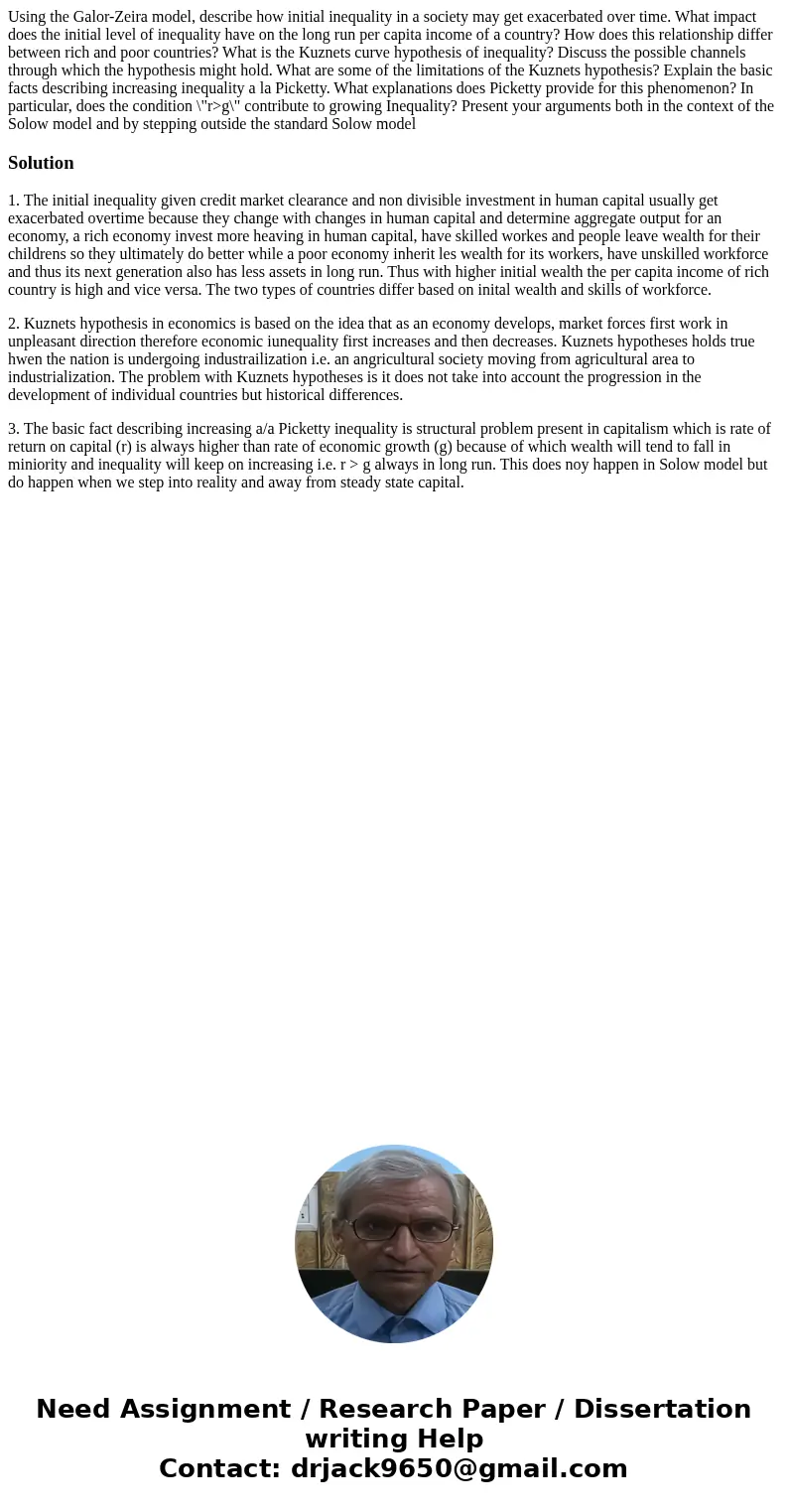Using the GalorZeira model describe how initial inequality i
Solution
1. The initial inequality given credit market clearance and non divisible investment in human capital usually get exacerbated overtime because they change with changes in human capital and determine aggregate output for an economy, a rich economy invest more heaving in human capital, have skilled workes and people leave wealth for their childrens so they ultimately do better while a poor economy inherit les wealth for its workers, have unskilled workforce and thus its next generation also has less assets in long run. Thus with higher initial wealth the per capita income of rich country is high and vice versa. The two types of countries differ based on inital wealth and skills of workforce.
2. Kuznets hypothesis in economics is based on the idea that as an economy develops, market forces first work in unpleasant direction therefore economic iunequality first increases and then decreases. Kuznets hypotheses holds true hwen the nation is undergoing industrailization i.e. an angricultural society moving from agricultural area to industrialization. The problem with Kuznets hypotheses is it does not take into account the progression in the development of individual countries but historical differences.
3. The basic fact describing increasing a/a Picketty inequality is structural problem present in capitalism which is rate of return on capital (r) is always higher than rate of economic growth (g) because of which wealth will tend to fall in miniority and inequality will keep on increasing i.e. r > g always in long run. This does noy happen in Solow model but do happen when we step into reality and away from steady state capital.

 Homework Sourse
Homework Sourse